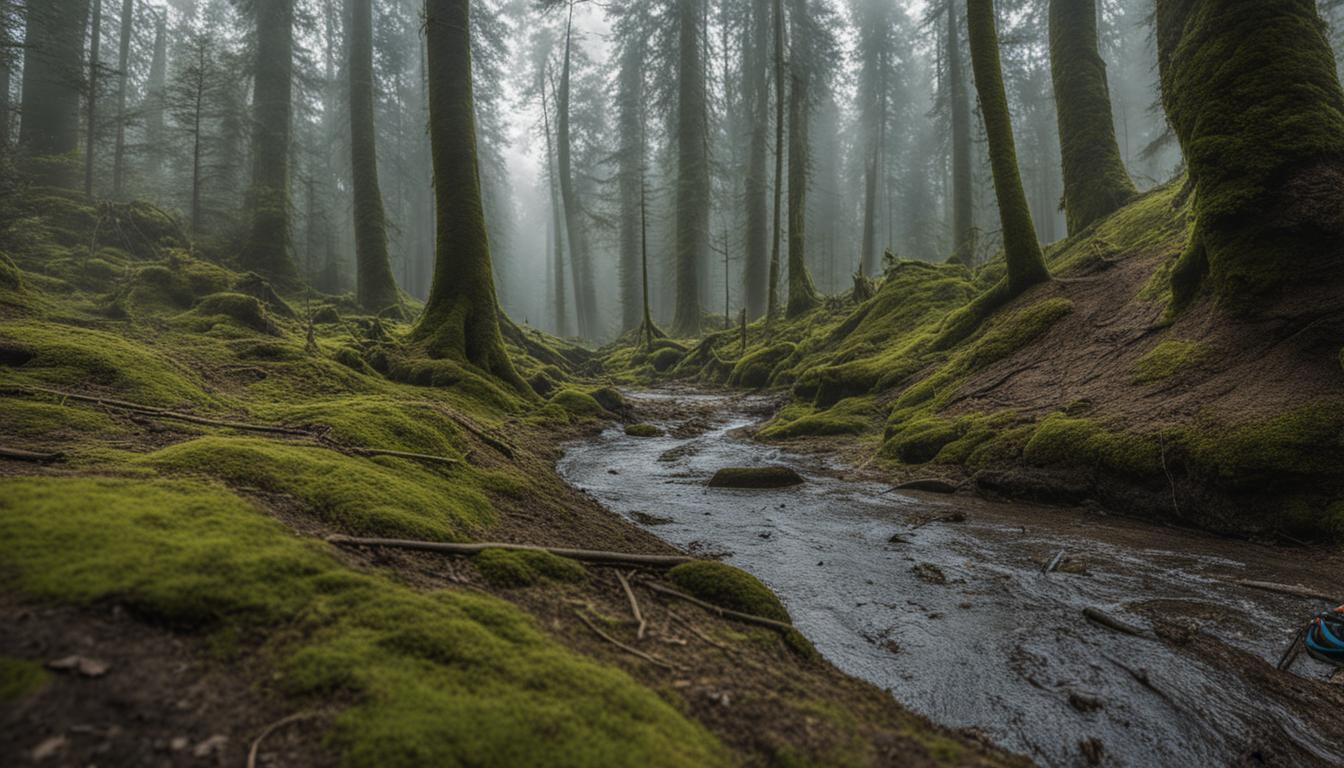Hey there! I’m excited to share with you the fascinating and somewhat alarming findings of a recent study conducted by the US Geological Survey (USGS). Brace yourself, as we delve into the impact of backpacking on our precious local wildlife and delicate ecosystems.
Now, we all love to explore the great outdoors and connect with nature, but it’s important to understand the environmental consequences that come with our adventurous spirit. Backpacking, while enjoyable, can have significant effects on the very ecosystems we admire and the wildlife that call these areas home.
According to the USGS study, the increasing number of visitors to protected natural areas, like national parks and wilderness areas, has led to a range of negative impacts. Let’s take a closer look at what this means for our environment and what we can do to make a positive change.
Key Takeaways:
- Backpacking has a significant impact on local wildlife and ecosystems.
- Trampling of native vegetation, soil erosion, and water contamination are just a few of the negative consequences.
- Tree damage, campsite expansion, and aquatic environment degradation are notable effects of camping.
- Hiking trails can both benefit and harm ecosystems, depending on their design and maintenance.
- Low-impact outdoor practices and education are essential for protecting the environment while enjoying backpacking.
The Effects of Camping on the Environment
Camping is a popular activity among backpackers, providing a unique opportunity to immerse oneself in nature. However, it is crucial to acknowledge that camping can have significant environmental impacts. One of the main concerns is tree damage caused by campers. A study conducted by the US Geological Survey (USGS) in the Boundary Waters Canoe Area Wilderness of Minnesota revealed that 44% of campsites had damaged trees, with an average of 18 trees being cut down per campsite for firewood.
Tree damage not only alters the natural landscape but also disrupts wildlife habitats. By cutting down trees, campers eliminate essential nesting sites for birds and create imbalances in the ecosystem. Furthermore, campsite expansion, especially in large, flat areas, can lead to increased water runoff. This runoff carries soil and pollutants into nearby lakes and creeks, resulting in the degradation of the aquatic environment.
To illustrate the impact of camping on the environment, consider the following table:
| Camping Impact | Effects |
|---|---|
| Tree Damage | Alters natural environments and wildlife habitats |
| Campsite Expansion | Increases water runoff with soil and pollutants into lakes and creeks |
| Aquatic Environment Degradation | Reduces water clarity, causes algal blooms, and decreases dissolved oxygen levels |
These findings highlight the need for responsible camping practices to minimize the negative impact on the environment. By following Leave No Trace principles, such as using designated firewood and disposing of waste properly, backpackers can help protect natural areas for future generations to enjoy.
The Impact of Hiking Trails on Ecosystems
Hiking trails have both positive and negative impacts on ecosystems. Well-designed and maintained trails can minimize disturbance and erosion by providing a designated path for hikers and preventing trampling of vegetation. However, poorly designed or maintained trails can cause erosion, damage vegetation, and disrupt wildlife.
The Trail Impact
Research has shown that trail and route density are directly correlated with habitat fragmentation and compression. As the number of trails increases, wildlife habitat becomes more fragmented, restricting movement and access to resources. This can lead to a decline in biodiversity and negatively impact the overall health of ecosystems. Additionally, hiking trails can disturb nesting sites and breeding areas, further disrupting wildlife populations.
Erosion and Habitat Fragmentation
Poorly designed trails can contribute to erosion, especially in areas with steep slopes or unstable soils. When trails are not properly constructed, water runoff can wash away soil, leading to increased erosion and sedimentation in nearby water bodies. This can negatively impact fish populations and aquatic ecosystems.
Wildlife Disturbance
Hiking trails can also disturb wildlife, especially when visitors venture off-trail or engage in noisy activities. Disturbed wildlife may have reduced access to essential resources such as food and water, which can affect their survival and reproductive success. It is crucial to stay on designated trails and minimize noise to minimize wildlife disturbance.
By understanding the impact of hiking trails on ecosystems, land managers can make informed decisions to protect sensitive areas. This includes careful trail planning, maintenance, and education for hikers to encourage responsible outdoor practices. By minimizing the negative impact of hiking trails, we can preserve the natural beauty and biodiversity of our ecosystems for future generations to enjoy.
| Trail Impact | Erosion and Habitat Fragmentation | Wildlife Disturbance |
|---|---|---|
| Fragmentation of wildlife habitat | Increased erosion due to poor trail design | Disruption of wildlife populations |
| Restricted movement for wildlife | Sedimentation in water bodies | Reduced access to resources |
| Decline in biodiversity | Negative impact on fish populations | Reduced survival and reproductive success |
Conclusion
After exploring the impact of backpacking on local wildlife and ecosystems, it is clear that we have a responsibility to protect the environment while enjoying our outdoor adventures. The environmental impact of recreational activities cannot be ignored, but there are steps we can take to minimize our footprint.
One of the most important ways to protect the environment is by practicing sustainable hiking. This means staying on designated trails to avoid trampling native vegetation and disturbing wildlife habitats. By being mindful of our surroundings and minimizing our impact, we can help preserve the natural beauty for future generations.
Additionally, following the principles of Leave No Trace is crucial. This involves packing out our trash, extinguishing fires properly, and being respectful of the natural environment. By adhering to these principles, we can ensure that our outdoor experiences have a minimal impact on the ecosystems we explore.
Education and awareness are key in promoting sustainable hiking and responsible tourism. By learning about the potential environmental impacts of our actions and sharing this knowledge with others, we can create a culture of environmental stewardship. Together, we can protect the environment and ensure that the beauty of our natural areas remains for years to come.

